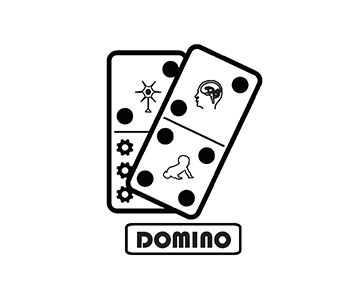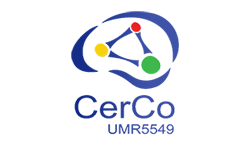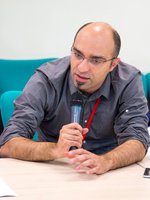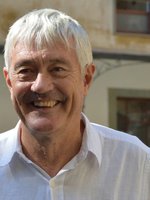DOMINO
The DOMINO project will investigate how information from different types of sensory systems are integrated within our nervous system, how this process develops from birth to adulthood, and to what extent this process is disrupted in autism spectrum disorders.
To achieve this we will develop an integrated approach combining cell-level electrophysiology and optogenetics, psychophysics, high-resolution imaging and computational modeling.

Project description
The ability to seamlessly integrate multiple sensory modalities into unified percepts is one of the key faculties of our brains. Impairments in sensory integration are thought to lie at the basis of many intellectual disabilities, including autism spectrum disorders (ASD). Yet, our understanding of how cortical multisensory integration develops is limited. To address this, we will implement an integrated approach to understand how multisensory integration develops. First, we will combine high-channel count electrophysiology and optogenetics with sensory manipulationsto study the micro-circuit level underpinning of cortical multisensory development in both control and ASD subjects. Second, we will perform experiments to reveal the psychophysics and physiology of multisensory integration across development in human subjects. These experimental components will then be integrated into a computational model of spike-based experience-dependent plasticity for multisensory integration. This component will provide a reference frame to understand how multisensory integration develops in the neocortex, and will provide a key contribution to ongoing efforts in the Human Brain Project aimed at modelling the human brain and at developing ICT tools to address brain disorders.
DOMINO aims to achieve a better understanding of the etiology of sensory processing deficits in ASD. This is an essential step to enable the development of new treatments to address these symptoms.
To achieve this, we will focus on the following objectives:
- Uncover the main circuit-level mechanisms via which MI develops during in cortical areas.
- Characterize how MI deficits develop in ASD subjects, and link such deficits to specific cortical dysfunctions, providing a circuit-level explanation of sensory deficits in ASD.
- Develop a computational model integrating the acquisition of cortical MI capabilities during neurodevelopment and able to explain the deficits observed in ASD.
Novel technologies in neuroscience (e.g. high-channel-count probes for ensemble recordings, high-resolution MRI) generate massive amounts of data. This requires computational skills and resources which are often not available to single research groups or even small consortia. The HBP Flagship offers a unique set of platforms to enhance the effectiveness of fundamental and applied neuroscientific research.
DOMINO will greatly benefit from the EBRAINS platform being developed by HBP:
- We will have access to advanced analytical tools to process the data that we will collect.
- We will be able to curate our datasets and make it available via the HBP Knowledge Graph, so that our results will be accessible to a vast audience.
- We will be able to use the High-Performance Analytics and Computing (HPAC) platform of EBRAINS, a great advantage to process the large datasets we will collect.
Moreover, DOMINO will provide data and models complementary to those being developed by the HBP core project. Specifically, we will contribute data about MI post-natal development in cortical networks, and a model component able to explain such development mechanistically in both healthy subjects and ASD individuals. This will be valuable to enhance the translational potential of the outcomes of HBP.
Partnering Organisations

University of Amsterdam (Project Coordinator)

CerCo CNR

Consiglio Nazionale delle Richerche

Panteion University
Biography

Umberto Olcese
Umberto Olcese received his PhD from Scuola Superiore Sant’Anna (Pisa, Italy). He is now assistant professor in the Cognitive and Systems Neuroscience (CSN) Group at the University of Amsterdam. He has a strong experience in performing extracellular recordings in freely moving and head fixed rodents, and in developing advanced analytical tools for integrating extracellular, intracellular and other forms of functional recordings (two-photon calcium imaging, intrinsic signal imaging). Focus of his research is the study of how the activity of cortical circuits for sensory processing is affected by factors such as development, brain state and learning.

Conrado Bosman
Conrado Bosman received his M.D. from the University of Chile in 2000 and his Ph.D. from the Catholic University of Chile in 2005. Since 2011, he is Assistant Professor at the CSN group within the Swammerdam Institute for Life Sciences at the University of Amsterdam. His research focuses on the study of long-range neuronal communication and multisensory integration mechanisms in health and disease (ASD), using combined multi-scale recordings ranging from neuronal ensembles to cortical local field potentials.

Benoit R. Cottereau
Benoit R. Cottereau is a CNRS researcher in neurosciences and vision, affiliated to the CerCo laboratory in Toulouse, France. His research aims at understanding the neural mechanisms leading to visual perception from interdisciplinary approaches that gather behavioural studies (psychophysics), multimodal neuroimaging (fMRI, EEG and MEG) and computational modelling. His work has numerous clinical applications (e.g. for patients suffering from eye diseases) and technological outputs (e.g. for developing artificial vision system).

Timothée Masquelier
Timothée Masquelier, aged 42, is a CNRS researcher in computational neurosciences and artificial intelligence, affiliated to the Centre de recherche cerveau et cognition (CerCo) laboratory in Toulouse, France. His research is highly interdisciplinary – at the interface between computer science, physics and biology. He pioneered a theory according to which neurons equipped with spike-timing-dependent plasticity (STDP) can detect and learn repeating spike patterns.

Celine Cappe
Celine Cappe is a CNRS Researcher at the CerCo laboratory (Brain and Cognition Center in Toulouse, France) in the C3P team (Crossmodal Compensation and cortical Plasticity). She is an expert in multisensory integration processing. She was trained as a neurobiologist at University Paul Sabatier (France) and University of Fribourg (Switzerland, PhD 2007). Her research focuses mainly on multisensory processing using a parallel approach in human and non-human primates and a large panel of methods as anatomy, psychophysics, intracranial electrophysiology and EEG recordings. She also investigates perception in psychiatric diseases.

Argiro Vatakis
Argiro Vatakis is an experimental psychologist, an assistant professor for the Psychology Department at Panteion University of Social and Political Sciences and the director of the Multisensory and Temporal Processing Laboratory (MultiTimeLab). She holds a PhD in Experimental Psychology from the University of Oxford, U.K., where she completed her doctoral research with Dr. C. Spence on the investigation of the factors modulating temporal perception for complex speech, musical, and object action events. She has worked and she is currently active in multisensory and temporal processing research. She has also worked on the investigation of object and action perception through language.

Panagiota Pervanidou
Panagiota Pervanidou, MD, is currently an Assοciate Professor of Developmental & Behavioral Pediatrics in the National and Kapodistrian University of Athens (NKUA), and, since 2007, Head of the Center of Developmental & Behavioral Pediatrics, First Department of Pediatrics, NKUA, School of Medicine, “Aghia Sophia” Children’s Hospital, Athens, Greece. Dr. Pervanidou is a graduate of Aristotle University of Thessaloniki, School of Medicine. She has a Medical Doctorate in the Neuroendocrinology of Posttraumatic Stress Disorder in Children and Adolescents from the First Department of Pediatrics and the Department of Child Psychiatry, NKUA, School of Medicine. She is a certified clinician in the administration and coding of Autism Diagnostic Observation Schedule (ADOS)-2, Autism Diagnostic Interview -revised (ADI-R), and the Bayley Scales III for infant and toddler development.

Nikolaos Smyrnis
Nikolaos Smyrnis studied at the Medical School of the National & Kapodistrian University of Athens (1983-1989) and did post-doctoral research in Neuroscience at Johns Hopkins University and the University of Minnesota. He currently is the director of an inpatient clinic specializing in the treatment of major psychiatric disorders at the Psychiatry Department of the Medical School, National & Kapodistrian University of Athens at Eginition Hospital. He is also the director of the Laboratory of Cognitive Neuroscience and Sensorimotor Control at the University Mental Health, Neurosciences and Precision Medicine Research Institute “COSTAS STEFANIS”. The laboratory is devoted in the study of fundamental sensorimotor and cognitive processes in healthy humans and patients with major psychiatric disorders using psychophysical, psychophysiological, electrophysiological, and neuroimaging methods.

Guido Marco Cicchini
Guido Marco Cicchini is an Electronic Engineer now turned to Neuroscience. He works at the Institute of Neuroscience of the Consiglio Nazionale delle Ricerche (Pisa, Italy). is works cover psychophysical and computational aspects of perceptual functions, including time perception, numerosity perception, eye movements and optimizing mechanisms in perception. Dr. Cicchini has experience both in modelling neural functions, in particular optimal behavior and measuring behavior in clinical populations including autism. His most recent series of works probed the relationship of geometrical cues in vision demonstrating a direct mechanism for perceiving numerosity in adults, typical adolescents and dyscalculic patients.

David Burr
David Burr is Professor at the University of Florence a leading expert in vision sciences with more than 250 publications across the domains of vision science. Prof Burr has many highly cited works including seminal work on MI and sub-optimal coding in autism.

Maria Concetta Morrone
Maria Concetta Morrone is Professor at the University of Pisa. She is a leading expert in the physiology of the visual system with more than 200 publications in fMRI, EEG, eye movements and pupil measurements. Her contributions span from brain plasticity to perception covering topics such as motion, time, space and multisensory integration.
Publications
- Meijer, G. T., Mertens, P. E., Pennartz, C. M., Olcese, U.*, & Lansink, C. S.* (2019). The circuit architecture of cortical multisensory processing: Distinct functions jointly operating within a common anatomical network. Progress in neurobiology 174, 1-15. (*: corresponding authors)
- Sikkens, T., Bosman Vittini, C.A. & Olcese, U. (2019). The role of top-down modulation in shaping sensory processing across brain states: implications for consciousness, Front Syst Neurosci, 13:31
- Olcese, U.*, Bos, J.J., Vinck, M., & Pennartz, C.M.A.* (2018). Functional determinants of enhanced and depressed inter-areal information flow in NREM sleep between neuronal ensembles in rat cortex and hippocampus, SLEEP, 41(11) (*: corresponding authors)
- Olcese, U., oude Lohuis, M. & Pennartz, C.M.A. (2018). Sensory processing across conscious and nonconscious brain states: from single neurons to distributed networks, Front Syst Neurosci, 12:49
- Storm, J. F., Boly, M., Casali, A. G., Massimini, M., Olcese, U., Pennartz, C. M., & Wilke, M. (2017). Consciousness regained: disentangling mechanisms, brain systems, and behavioral responses. Journal of Neuroscience, 37(45), 10882-10893.
- Olcese, U., Bos, J. J., Vinck, M., Lankelma, J. V., van Mourik-Donga, L. B., Schlumm, F., & Pennartz, C. M. (2016). Spike-based functional connectivity in cerebral cortex and hippocampus: loss of global connectivity is coupled to preservation of local connectivity during non-REM sleep. Journal of Neuroscience, 36(29), 7676-7692.
- Montijn, J.S., Olcese, U. & Pennartz, C.M.A. (2016). Visual stimulus detection correlates with the consistency of temporal sequences within stereotyped events of V1 neuronal population activity, J Neurosci, 36 (33), 8624-8640
- Arbab, T., Battaglia, F. P., Pennartz, C. M., & Bosman, C. A. (2018). Abnormal hippocampal theta and gamma hypersynchrony produces network and spike timing disturbances in the Fmr1-KO mouse model of Fragile X syndrome. Neurobiology of disease, 114, 65-73.
- Rohenkohl, G., Bosman, C. A., & Fries, P. (2018). Gamma synchronization between V1 and V4 improves behavioral performance. Neuron, 100(4), 953-963.
- Chauhan T, Masquelier T & Cottereau BR (2019): Sub-optimality of the early visual system explained through biologically plausible plasticity. BioRxiv, 799155.
- Hejja-Brichard Y, Rima S, Rapha E, Durand JB, Cottereau BR (2019): Stereomotion processing in the non-human primate brain. BioRxiv, 638155.
- Khoei M, Galluppi F, Sabatier Q, Pouget P, Cottereau BR* & Benosman R* (2019): Faster is better: Visual responses to motion are stronger for higher refresh rates. BioRxiv 505354 (*: Shared last authorship)
- Bogdanova O, Bogdanov V, Durand JB, Trotter Y, Cottereau BR (2019) : Dynamics of the straight-ahead preference in human visual cortex. Brain Structure and Function, 1-14.
- Kohler PJ, Cottereau BR & Norcia AM (2019): Image segmentation based on relative motion and relative disparity in topographically organized areas of human visual cortex. Scientific Reports, 9(1), 9308.
- Rima S, Khalil K, Cottereau BR, Trotter Y & Durand JB (2019): Asymmetry of pictorial space: A cultural phenomenon. Journal of vision, 19(4), 22-22.
- Contemori G, Trotter Y, Cottereau BR & Maniglia M (2019): tRNS boosts perceptual learning in peripheral vision. Neuropsychologia, 125, 129-136.
- Chauhan T, Masquelier T, Montlibert A & Cottereau BR (2018): Emergence of binocular disparity selectivity through Hebbian learning. Journal of Neuroscience, 38(44), 9563-9578.
- Maniglia M, Soler V, Cottereau BR* & Trotter Y* (2018): Spontaneous and training-induced cortical plasticity in MD patients: Hints from lateral masking. Scientific Reports, 8 (1), 90. (*: Shared last authorship)
- Kohler PJ, Cottereau BR & Norcia AM (2018): Dynamics of perceptual decisions about symmetry in visual cortex. NeuroImage, 167, 316-330.
- Lim M, Ales JM, Cottereau BR, Hastie T & Norcia AM (2017): Sparse EEG/MEG source estimation via a group lasso. Plos One, 12(6), e0176835.
- Cottereau BR, Smith AT, Rima S, et al. (2017): Processing of egomotion-consistent optic flow in the rhesus macaque cortex. Cerebral Cortex, 27(1), 330-343.
- Kostaki, M., & Vatakis, A. (2016). Crossmodal Binding Rivalry: A “race” for integration between unequal sensory inputs. Vision Research, 127, 165-176.
- Tsilionis, E., & Vatakis, A. (2016). Multisensory binding: Is the contribution of synchrony and semantic congruency obligatory? Current Opinion in Behavioral Sciences, 8, 7-13.
- Makris G, Chrousos G, Anesiadou S, Sabico S, Abd-Alrahman SH, Al-Daghri N, Chouliaras G, Pervanidou P. Serum concentrations and detection rates of selected organochlorine pesticides in a sample of Greek school-aged children with neurodevelopmental disorders. Accepted in Envir Science and Pollution Research, June 2019
- Agorastos A, Pervanidou P, Chrousos GP, Baker DG. Developmental Trajectories of Early Life Stress and Trauma: A Narrative Review on Neurobiological Aspects Beyond Stress System Dysregulation. Front Psychiatry. 2019 Mar 11;10:118.
- Angeli E, Korpa T, Johnson EO, Apostolakou F, Papassotiriou I, Chrousos GP, Pervanidou P. Salivary cortisol and alpha-amylase diurnal profiles and stress reactivity in children with Attention Deficit Hyperactivity Disorder. Psychoneuroendocrinology. 2018 Apr;90:174-181.
- Korpa T, Pervanidou P, Angeli E, Apostolakou F, Papanikolaou K, Papassotiriou I, Chrousos GP, Kolaitis G. Mothers' parenting stress is associated with salivary cortisol profiles in children with attention deficit hyperactivity disorder. Stress. 2017 Mar;20(2):149-158.
- Oikonomakis V, Kosma K, Mitrakos A, Sofocleous C, Pervanidou P, Syrmou A, Pampanos A, Psoni S, Fryssira H, Kanavakis E, Kitsiou-Tzeli S, Tzetis M. Recurrent copy number variations as risk factors for autism spectrum disorders: analysis of the clinical implications. Clin Genet. 2016 Jun;89(6):708-18.
- Mylonas D, Siettos CI, Evdokimidis I, Papanicolaou Ac, Smyrnis N (2016) Modular Patterns of Phase Desynchronization Networks During a Simple Visuomotor Task. Brain Topography 29:118-129.
- Damilou A, Apostolakis S, Thrapsanioti E, Theleritis C, Smyrnis N (2016) Shared and distinct oculomotor function deficits in schizophrenia and obsessive compulsive disorder. Psychophysiology 53:796-805.
- Kaspiris-Rousellis C, Siettos C, Evdokimidis I, Smyrnis N (2017) Reaching to virtual targets: the oblique effect reloaded in 3D. Neuroscience 343: 128-139.
- Panagiotaropoulou G, Thrapsanioti E, Pappa E, Grigoras C, Mylonas D, Karavasilis E, Velonakis G, Kelekis N, Smyrnis N (2019) Hypo-activity of the dorsolateral prefrontal cortex relates to increased reaction time variability in patients with schizophrenia. Neuroimage Clinical, in press.
- Cicchini, G. M. (2019). Vision: Filling Black Holes. Curr Biol, 29(7), R245-R248.
- Cicchini, G. M., Anobile, G., & Burr, D. C. (2019). Spontaneous representation of numerosity in typical and dyscalculic development. Cortex, 114, 151-163.
- Cicchini, G. M., Mikellidou, K., & Burr, D. C. (2018). The functional role of serial dependence. Proc Biol Sci, 285(1890).
- Cicchini, G. M., Anobile, G., & Burr, D. C. (2016). Spontaneous perception of numerosity in humans. Nat Commun, 7, 12536.
- Karaminis, T., Cicchini, G. M., Neil, L., Cappagli, G., Aagten-Murphy, D., Burr, D., & Pellicano, E. (2016). Central tendency effects in time interval reproduction in autism. Sci Rep, 6, 28570.
- Ho, H. T., Burr, D. C., Alais, D. & Morrone, M. C. (2019). Auditory Perceptual History Is Propagated through Alpha Oscillations, Current Biology, 24 (29), 4208-4217.e4203
- Turi, M., Burr, D. C. & Binda, P. (2018). Pupillometry reveals perceptual differences that are tightly linked to autistic traits in typical adults, Elife, (7) e32399
- Karaminis, T., Neil, L., Manning, C., Turi, M., Fiorentini, C., Burr, D.C., et al. (2017). Ensemble perception of emotions in autistic and typical children and adolescents, Developmental Cognitive Neuroscience, (24), 51-62
- Turi, M., Karaminis, T., Pellicano, E. & Burr, D.C. (2016). No rapid audiovisual recalibration in adults on the autism spectrum, Scientific Reports, (6), 21756.
- Benedetto, A., Morrone, M.C. & Tomassini, A. (2019). The Common Rhythm of Action and Perception., Journal of Cognitive Neuroscience Volume 32(2) p.187-200
- Castaldi, E., Tinelli, F., Cicchini, G. M., & Morrone, M. C. (2018). Supramodal agnosia for oblique mirror orientation in patients with periventricular leukomalacia. Cortex 103, 179–198
- Binda, P., Kurzawski, J. W., Lunghi, C., Biagi, L., Tosetti, M. & Morrone, M. C. (2018). Response to short-term deprivation of the human adult visual cortex measured with 7T BOLD, Elife, (7) e40014
- Turi, M., Muratori, F., Tinelli, F., Morrone, M. C. & Burr, D. C. (2017). Autism is associated with reduced ability to interpret grasping actions of others, Sci Rep, 1 (7), 12687
- Castaldi, E., Cicchini, G. M., Cinelli, L., Biagi, L., Rizzo, S. & Morrone, M. C. (2016). Visual BOLD Response in Late Blind Subjects with Argus II Retinal Prosthesis, PLoS Biol, 10 (14), e1002569
- Quercia P., Pozzo T., Marino A., Guillemant A.L., Cappe C. & Gueugneau N. (in press) Children with dyslexia have altered cross-modal processing linked to binocular fusion. A pilot study. Clinical Ophthalmology
- Mercier M.R. & Cappe C. (2019). The interplay between multisensory integration and perceptual decision making. bioRxiv: 513630.
- Quercia P., Pozzo T., Marino A., Guillemant A.L., Cappe C., Gueugneau N. (2019) Alteration in binocular fusion modifies audiovisual integration in children. Clinical Ophthalmology, 13: 1137.
- Favrod O, Sierro G, Roinishvili M, Chkonia E, Mohr C, Herzog MH & Cappe C. (2017) Electrophysiological correlates of visual backward masking in high schizotypic personality traits participants. Psychiatry Res. 254:251-257.
- Juan C, Cappe C, Alric B, Roby B, Gilardeau S, Barone P & Girard P. (2017) The variability of multisensory processes of natural stimuli in human and non-human primates in a detection task. PLoS One. 12: e0172480.
- Lanz F., Moret V., Ambett R., Cappe C., Rouiller E.M. & Loquet G. (2017) Distant heterotopic callosal connections to premotor cortex in non-human primates. Neuroscience. 344:56-66.
- Tavanaei A, Ghodrati M, Kheradpisheh SR, Masquelier T, Maida A (2019) Deep learning in spiking neural networks. Neural Networks 111:47–63.
- Kheradpisheh SR, Masquelier T (2019) S4NN: temporal backpropagation for spiking neural networks with one spike per neuron. arXiv.
- Mozafari M, Ganjtabesh M, Nowzari-Dalini A, Masquelier T (2019) SpykeTorch: Efficient Simulation of Convolutional Spiking Neural Networks With at Most One Spike per Neuron. Front Neurosci 13(July):1–12.
- Mozafari M, Ganjtabesh M, Nowzari-Dalini A, Thorpe SJ, Masquelier T (2019) Bio-inspired digit recognition using reward-modulated spike-timing-dependent plasticity in deep convolutional networks. Pattern Recognit 94:87–95.
- Chauhan T, Masquelier T, Cottereau BR (2019) Sub-optimality of the early visual system explained through biologically plausible plasticity. bioRxiv.
- Zimmer R, Pellegrini T, Singh Fateh S, Masquelier T (2019) Technical report: supervised training of convolutional spiking neural networks with PyTorch. arXiv.
- Chauhan T, Masquelier T, Montlibert A, Cottereau BR (2018) Emergence of Binocular Disparity Selectivity through Hebbian Learning. J Neurosci 38(44):9563–9578.
- Huth J, Masquelier T, Arleo A (2018) Convis: A Toolbox to Fit and Simulate Filter-Based Models of Early Visual Processing. Front Neuroinform 12(March):1–16.
- Masquelier T (2018) STDP Allows Close-to-Optimal Spatiotemporal Spike Pattern Detection by Single Coincidence Detector Neurons. Neuroscience 389:133–140.
- Kheradpisheh SR, Ganjtabesh M, Thorpe SJ, Masquelier T (2018) STDP-based spiking deep convolutional neural networks for object recognition. Neural Networks 99:56–67.
- Masquelier T, Kheradpisheh SR (2018) Optimal Localist and Distributed Coding of Spatiotemporal Spike Patterns Through STDP and Coincidence Detection. Front Comput Neurosci 12(September):1–13.
- Mozafari M, Kheradpisheh SR, Masquelier T, Nowzari-Dalini A, Ganjtabesh M (2018) First-Spike-Based Visual Categorization Using Reward-Modulated STDP. IEEE Trans Neural Networks Learn Syst 29(12):1–13.
- Tavanaei A, Masquelier T, Maida A (2018) Representation learning using event-based STDP. Neural Networks 105:294–303.
- Yousefzadeh A, Masquelier T, Serrano-Gotarredona T, Linares-Barranco B (2017) Hardware implementation of convolutional STDP for on-line visual feature learning. 2017 IEEE International Symposium on Circuits and Systems (ISCAS) (IEEE), pp 1–4.
Key facts
Time frame: 2020 - 2022
Origin: FLAG-ERA JTC2019



